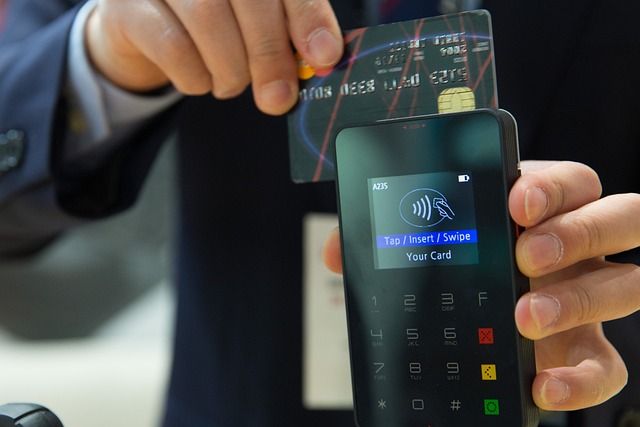
In recent years, there might have been suggestions that brick-and-mortar stores are becoming obsolete, being replaced by online shopping as the dominant force in consumerism. However, despite the rapid growth of e-commerce sales, the idea that in-store shopping is dying out has been greatly overstated.
One reason for the preference of UK consumers for shopping on high streets is that the average consumer tends to spend significantly more in store than online, resulting in higher retail sales in the US which were valued at $1.47 trillion, compared to $206.6 billion for e-commerce.
Now is not the appropriate moment to rely solely on online sales. Retail is still highly advantageous, and retailers should focus on enhancing their stores by boosting their Average Transaction Value. Continue reading to learn precisely what an Average Transaction Value (ATV) is, how to compute it, and effective strategies for increasing it.
Average Transaction Value
Average Transaction Value refers to the mean sum of money that a customer typically expends in one transaction. The process of determining ATV is quite straightforward. It involves computing the total income generated within a specified timeframe and dividing it by the total count of transactions conducted during that same timeframe.
Analyzing your Average Transaction Value is important in retail because it helps you gain a better understanding of your customers’ product interactions. It provides insight into which products are popular, which items are commonly purchased together, and whether your in-store displays are effective. By examining your ATV, you can gather valuable data to help you improve your store’s performance.
How to Increase Store’s Average Transaction Value
1. Encourage Upselling and Cross-selling
Upselling and cross-selling are proven techniques that encourage consumers to buy upgrades and add-ons, leading to a natural increase in your Average Transaction Value. Retailers cannot afford to overlook these strategies, as on average, upselling increases revenue by 10-30%.
To enhance your sales profits, give your workforce training and techniques in upselling and cross-selling that enable them to effectively drive sales. By focusing on comprehending individual customers, your staff will gain a better understanding of which upgrades and add-ons to suggest.
Increase the likelihood of customers bundling items together, such as placing phone cases next to phone chargers, by showcasing complimentary products throughout the store to complement your skilled workforce.
2. Set Goals
To increase your Average Transaction Value in retail, it is crucial to focus on the skill and motivation of your staff. Setting goals and fostering motivation within your workforce can be an effective approach to achieve this desired outcome.
In order for your staff to have a clear understanding of what they are working towards, it is important to establish a target for them to reach. Failure to establish clear goals from the beginning can make it difficult to achieve them. You have various options to set targets, such as individual goals, team goals, or weekly goals. It is essential to find the approach that suits your workforce and implement it accordingly.
To maintain the same meaning, rephrase the text as follows: Consider incorporating gamification into your goals and foster a sense of friendly competition among your staff. Creating a leaderboard to display the number of sales made by each team member can serve as a simple yet effective way to incentivize your staff and push them to excel.
Incorporate external motivation alongside internal motivation by offering incentives. Examples of these incentives could be granting shift preferences to employees who excel at upselling, or providing a financial reward if it aligns with your business model. Incentives are widely favored by employees worldwide, as 88% believe it is crucial for employers to recognize and reward exceptional performance.
3. Leverage Promotions
Promotions serve as a successful strategy to encourage consumers to buy products. When employed appropriately, promotions eliminate the obstacle that might deter customers from purchasing their desired items. For instance, the main factor affecting 89% of customers’ buying choices is price. In order to tackle this, retailers frequently employ tactics such as buy-one-get-one-free deals or temporary reductions in price.
If you are a retailer who wants to succeed in the industry, it is likely that you already use promotions. However, it is important to ensure that you are making the most of them. Be certain that your customers are informed about the promotions you have available by motivating your staff to mention them during their interactions with customers.
Even if the customer is asking about a different product, your workforce can still mention the deal without interrupting the conversation. This approach should be used alongside visual aids placed around the store that promote the available sales.
By imposing a time constraint on offers, you can instill a sense of urgency to make a purchase. This awareness that the deal is not everlasting may prompt consumers to buy the item, fearing that they might miss out on such a rare opportunity in the future.
Product bundling is an effective technique to increase consumer purchases. By combining complementary products, you can encourage customers to leave with multiple items instead of just one. It is essential to ensure that your staff is informed about these promotions and can effectively communicate them to customers through continuous training on the latest offers and bundles.
4. Create and Optimize a Loyalty Program
Loyalty programs, which are usually employed as customer retention strategies, also generate additional revenue as existing customers tend to spend more per transaction compared to new customers.
Having a well-structured and enticing loyalty program is vital to retain your customers and prevent them from switching to competitors. It is highly likely that your customers expect you to have a loyalty program, as 87% of consumers expressed their desire for brands to offer such programs.
If you are a retailer, it is important for you to create or improve your loyalty program. The key is to make your customers feel appreciated and reward them for their positive actions. Therefore, make an effort to provide discounts, promotions, and savings to those who deserve them. One option is to implement a points-based reward system, where customers earn points for every dollar they spend. When they accumulate enough points, they can receive a discount.
To raise awareness, ensure that your staff is informed about the program’s details, enabling them to relay this information to customers.
If you are unsure about where to begin, you can gather inspiration from successful retailers like Macy’s and Target. Both of these retail giants have different loyalty programs, but they are equally effective in retaining customers and increasing their ATV. Macy’s uses a star reward system with four levels, while Target provides a REDcard that gives customers a 5% discount on all their purchases.
5. Use the Right Promotions to Increase Purchase Values Temporarily
To achieve a temporary boost in purchase values, you can always employ several well-established promotions.
- A certain percentage or amount off once the customer reaches a chosen threshold. Think “$25 off of $100.”
- BOGOs. Buy one get one promos are intended to raise purchase values because in order to take advantage of the sale, the customer has to buy at least two things.
- Offer bundle discounts. These can usually be offered all year round, as well. For items that a customer would be more likely to buy in bulk if it were cheaper, offer a discount for purchasing more at once. You can even stagger this discount: 10% off for 2, 15% off for 3, etc.
6. Offer Free Shipping on Unavailable Items
One way to easily boost a customer’s purchase value is by providing complimentary shipping for items that are unavailable in your store. Therefore, you do not suffer any loss in a sale or portion of a sale due to the inability to physically deliver the item to the customer.
A lot of big stores have adopted this practice. For example, DSW has the ability to place an order for a pair of shoes for a customer when their size is not available in-store and have it delivered to their doorstep. Based on my own experience as a customer, this policy poses a significant risk to my wallet.
7. Be Flexible with Payments
If you can discover a method to make shopping at your store more affordable, it has the potential to motivate your customers to spend more as the size of their transactions is directly influenced by their budget.
To accomplish this, consider providing flexible payment options such as lay-by or installments. If receiving full payment upfront isn’t preferable, you can utilize Afterpay, a solution that enables customers to pay for their purchases in four fortnightly installments while allowing you to receive immediate payment for the items. There are no additional costs for customers if payments are made on time, and the service is interest-free.
According to Billy Parry, who is the Head of Sales – SMB at Afterpay, retailers witness higher average order values when they have Afterpay available for in-store purchases compared to their online transactions. Enabling customers to make payments over time gives them the ability to purchase more of their desired items while managing their budget effectively.
8. Use Merchandising to your Advantage
The arrangement of your merchandise in your store can greatly impact purchase value, and even assist in cross-selling.
9. Display Impulse Purchases and Gift Cards Near the Register
Sephora has a perfected and time-honored technique which involves 1-3 elements: urgency, value, and/or excitement, and is used by most stores.
Sephora has established an organized area for customers to wait at the checkout counter by arranging a zig-zag line with their travel size products, allowing you to browse as you await your turn to pay.
After selecting the products of your choice at the store, resisting the temptation to buy a smaller, more affordable version of an item you previously desired but couldn’t afford can be difficult. This approach has greatly contributed to the substantial increase in Sephora’s in-store purchase rate in recent years, in contrast to the declining in-store purchase rate in the retail industry.
If you want to increase sales of gift cards at the point of sale, consider purchasing a convenient gift card holder to display near the checkout area. Various options such as gift card racks, shelves, and holders are readily available for use in your store, with prices ranging from approximately $3 to $35.
Pair items that sell well together throughout the store
Grocery stores excel in creating such displays, with Buehler’s Fresh Foods being a prime example. To illustrate, they strategically placed their cherry pitters alongside their cherries, resulting in the cherry pitters completely selling out at all of their establishments.
After realizing that many fathers were purchasing diapers, Tesco became more inventive. They decided to place beer and other snacks commonly bought by male customers in the same aisle. As a result, they observed an immediate boost in sales.
10. Use your Receipts
Although this tip does not actually raise the initial purchase value of a customer, it does raise the overall amount spent by a customer within a 48-hour period.
The majority of retailers are not aware that email receipts are valuable and overlooked. flexReceipts, a company specializing in digital receipts, has discovered that 80% of digital receipts are opened and 75% of recipients who interact with a digital receipt will make a new purchase within 2 days.
In order to utilize this opportunity, one can incorporate (preferably interactive) call-to-action buttons in electronic receipts, such as suggesting related products (continuing cross-selling even after customers exit the store) or providing bounce-back coupons.
Side notes
Though it may require some effort, increasing purchase values can yield positive outcomes once you initiate the process. With this post, it is expected that you move a step closer to achieving this goal.





